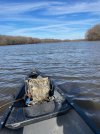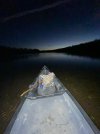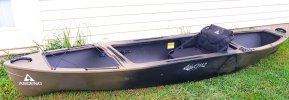Coachschaller
Active Member
I have a 17 foot fiberglass canoe. Does anybody have any good ideas for securing gear during the ride and in case of a capsize? I do not want thousands of dollars of gear in the bottom of the river....
I am able to get really close to a couple of my spots by river, so I might like to be quiet. You can tell me your experience if stealth is feasible while getting in or out of the canoe.
Gear:
JX3: Might not wear as well as my Cruzr XC while paddling. So I might need to secure it
Backpack: Very large, might be leaving it in the canoe during the hunt.
Bow.
I am a little afraid of just loosely placing the gear on the floor of the canoe. I could step on it on my way out of the canoe (should I place it in the front or middle?), or it could fall out of the canoe should the canoe tip. I have thought about just putting a rope and carabiner on the cross member. I have also thought about a giant float inner-tube, or a life jacket.
Looking forward to hearing your experiences
I am able to get really close to a couple of my spots by river, so I might like to be quiet. You can tell me your experience if stealth is feasible while getting in or out of the canoe.
Gear:
JX3: Might not wear as well as my Cruzr XC while paddling. So I might need to secure it
Backpack: Very large, might be leaving it in the canoe during the hunt.
Bow.
I am a little afraid of just loosely placing the gear on the floor of the canoe. I could step on it on my way out of the canoe (should I place it in the front or middle?), or it could fall out of the canoe should the canoe tip. I have thought about just putting a rope and carabiner on the cross member. I have also thought about a giant float inner-tube, or a life jacket.
Looking forward to hearing your experiences





